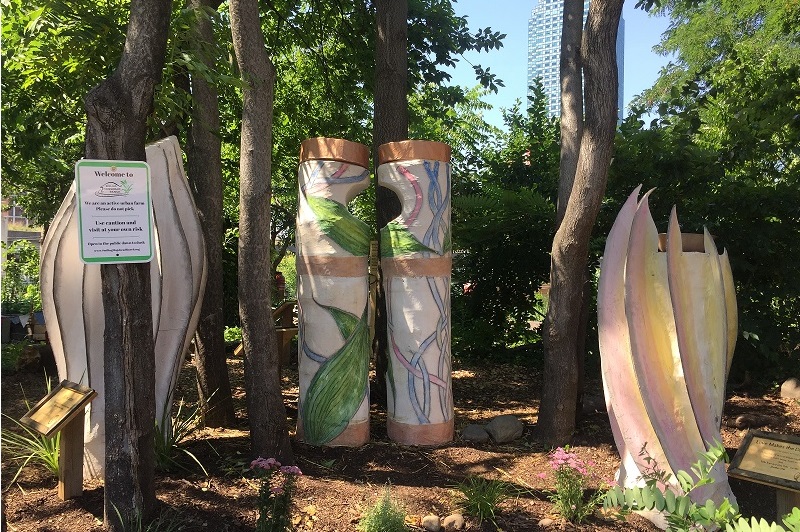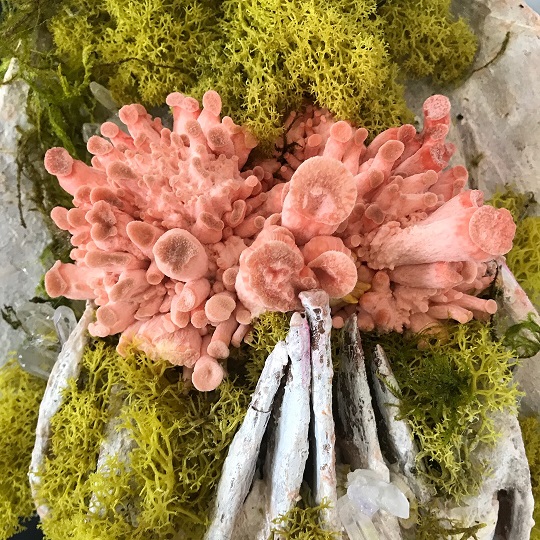Moving Beyond Sustainability
Regenerative Art
Salt Tree Art creates and supports environmental artwork. We explore creative processes that integrate natural and social systems, using our art to revitalize links between human communities and the ecosystems they inhabit.
We are inspired by the regenerative agriculture movement, where holistic approaches to agriculture generate positive impacts to the ecosystems and communities linked to food production. Salt Tree Art aspires to similarly pursue regenerative art, using our work to create healing within the environment and the communities our projects serve.
Our vision for regenerative art seeks to give equal standing to the artist, the public, and the natural environment, all as active, empowered peers throughout the design process.
What Does Regenerative Art Look Like?
Sample Projects

Myco-Rise
An edible mushroom sculpture experiment that combined community arts, citizen science, and soil improvement.

Wind & Waves
A public art exhibition at New York City’s LaGuardia Airport, incorporating community “seed stories” into a biodegradable sculpture.
Sticky Situations (2018 - Present)

Experimental sculptural series in which honey bees are enlisted as artistic collaborators. Produced by housing wood-carved busts inside an active beehive for one year, the honey bees attach comb to create haunting, unexpected organic effects! The first sculpture for this series, Comb Over, debuted at the Factory Gallery in New York City for the LIC Arts Open, and has been making gallery rounds since. With the success of the pilot sculpture, additional works using this slow-form technique are currently under design!

Payback (2018)
Interactive sculpture which dispenses milkweed seed balls. The sculpture is intended to raise awareness on habitat loss for the endangered rusty patched bumble bee, and provides a call for its audience to plant the seed balls as an act of habitat restoration.

Bees & Nutmeg (2021)
A functioning sculptural solitary bee home modeled after the Waterbury, CT clock tower. Solitary bees are less celebrated than their honey-making cousins, but these powerful pollinators are responsible for much of the food we eat.
Mycology Sculpture Series (2017-Present)

